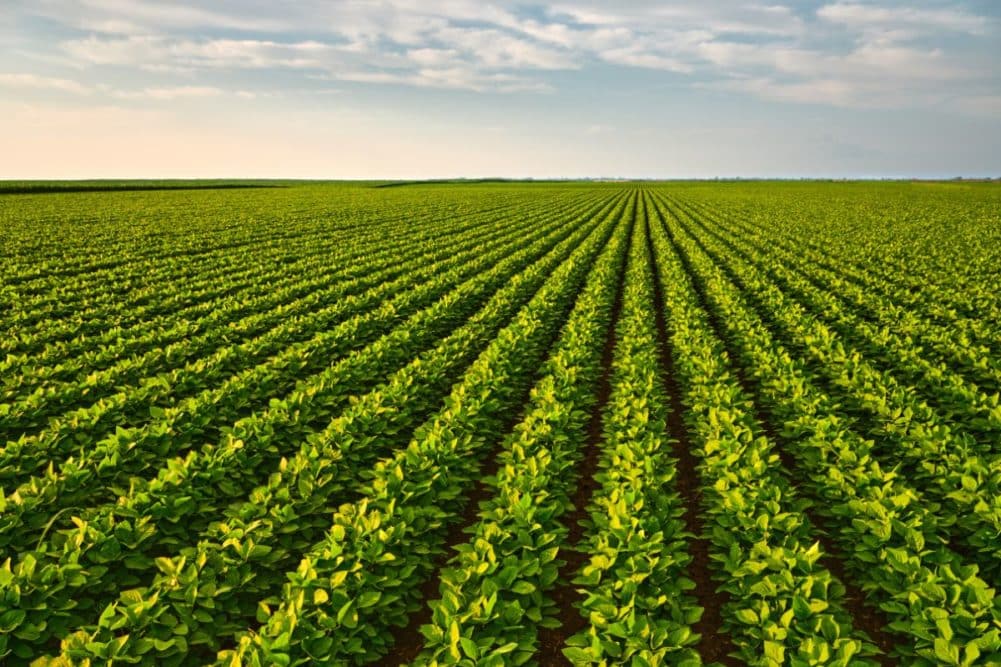
World oilseed prices rose in July after months of falls, with sunflower, notably, rising because of uncertainty over Black Sea shipments and new crop supplies looking tight ahead of harvest.
Improving crop conditions in the first half of August in the United States triggered new declines, although it remains to be seen what impact the heatwave in the US Midwest in late August will have on the soybean crop. On Aug. 21, soybean futures on the Chicago Board of Trade rose to their highest level since July as excessive heat warnings were issued in many of the country’s key production areas.
The International Grains Council, in its Grain Market Report of Aug. 17, said that during the previous month “chiefly pulled lower by declines in the United States (and Argentina), average international soybean values, as measured by the IGC GOI sub-Index, retreated by 5%.”
“Chicago soybean futures dropped by up to 11% as improved Midwest weather conditions pressured,” the London, England-based organization said. “This outweighed support, at times, from tightening availabilities and signs of an uptick in international demand for new crop supplies, as evidenced by a raft of sales to China and other destinations.
“Technical activity was also influential, while soy product price trends were mixed, with steadiness in soy oil contrasting with a downturn in soy meal. Although basis levels were firmer, US Gulf spot export quotations were 8% lower at US$538 fob.”
Nominal Up River quotations in Argentina generally tracked movements in US values, falling by 7% month-on-month, the IGC noted. However, prices in Brazil (Paranagua) were down by a relatively marginal 1%, at $518 fob, as export premiums strengthened markedly amid solid local and international demand, as well as currency movements.
Concerning rapeseed, the Council reported that “despite worries surrounding 2023-24 crop prospects in Canada, ICE canola futures declined by 6% (month-on-month) on profit taking, with losses in soybeans a bearish influence, while fob prices (Vancouver) also fell.”
In Australia, fob quotations (Kwinana) softened by $31, to $545, the IGC said.
In its Food Price Index, published on Aug. 8, the United Nations Food and Agriculture Organization (FAO) said world vegetable oil prices were up by 12.1% in July compared with June, the first increase after seven months of consecutive declines.
“This pronounced increase in July was driven by higher world quotations across sunflower, palm, soy, and rapeseed oils,” the FAO said. “International sunflower oil prices rebounded by more than 15% month-on-month, primarily underpinned by renewed uncertainties surrounding the exportable supplies out of the Black Sea region after the decision taken by the Russian Federation to terminate the implementation of the Black Sea Grain Initiative. World palm oil prices also rose markedly, reflecting prospects of subdued production growth in leading producing countries.”
As for soy and rapeseed oils, international prices increased on continuing concerns over the production outlooks of soybeans in the United States and rapeseed in Canada, respectively, the FAO said.
“Rising world crude oil quotations also lent support to vegetable oil prices,” the FAO said.
The USDA Economic Research Service (ERS) said in its Aug. 15 Oil Crops Outlook that “world rapeseed production for marketing year (MY) 2023-24 is projected at 86.1 million tonnes, 1.35 million tonnes lower than the previous forecast due to lower-than-expected output in Canada, Russia and Uruguay. This reduction is partially offset by higher rapeseed production in Belarus and Ukraine.”
The MY 2023-24 global sunflower seed production forecast is raised by 1.1 million tonnes to 55.8 million tonnes, it added.
“Higher production in Ukraine and Russia more than offset the lower sunflower seed crops in the European Union (EU), Kazakhstan, Turkey, and China,” the ERS said.
